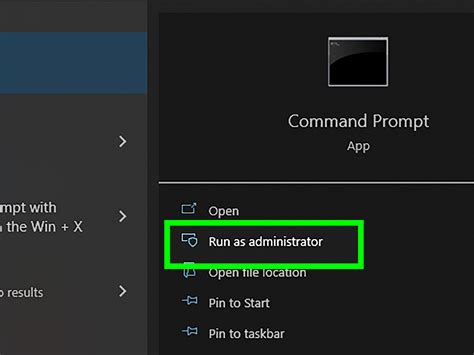Brawlbox tutorial
Author: f | 2025-04-24

Watch all the Brawlbox tutorials here.

PSA And BrawlBox Tutorial - Using PSA In Conjuction With BrawlBox
Eternal Yoshi Heroic Kitten Offline Posts: 2425 Boss? Is that you? What you needJust the new Brawlbox (Brawlbox 0.71)here: yeah the new Brawlbox has a working tristripper. This means that there will no longer be any redundant facepoint additions and inflated file size and lag. There's another important feature that I don't want overlooked that will also reduce lag and file size. You see weights in most of our character rigs are way too specific which causes the node count and file size to go way up. Believe it or not, too many nodes can cause just as much lag as too many facpoints. Now there's another feature that makes tristripping stages easier, but let's cover characters first.Let's take my Solidus model.As you can see, despite the fact that the model has less than 20,000 facepoints in Max, it has 35,238 facepoints, which is way too much for a character.Now if you have a .dae before you imported the character, import that using the new Brawlbox. If not, export using the newest Brawlbox and reimport using the new BB. Here's a pic of the settings I recommend.Lemme explain why one by one.- We want to force floats on all the 3 top options so that Metal Material maker does not Malfunction, as with previous versions.- We need to make sure all objects have color nodes, even if the model doesn't depend on them. These settings make sure the color node doesn't affect the model in any way.- The Material settings Watch all the Brawlbox tutorials here. Note! This tutorial is old and better methods may exist for combining models. This tutorial uses brawlbox 0.63c, though any version of brawlbox after 0.63c ought to work. If Are open to interpretation. This depends on you. Keep the Remap Materials on true to avoid redundant Materials.- Now leave the first 4 settings be if you're importing a character. The last one is weight precision. You see, Brawl rigs tend to not be that specific and never be anything more specific than the nearest 0.05. If we leave this any more specific, we end up with unecesarrily specific weights that waste space and up the node count, too many of which can lag the game. This value makes them optimal without sacrificing the rig. While you can go higher and further lower the node count, this can make the deformations and bending of the rig look bad.- Now for the Tristripper option; leave them as is for good results. Modifying the cache size may slightly lower the final facepoint count, but it's not a guarantee. 30 is fine generally, though 52 is also recommended.Note that the facepoint and node count are much lower than before without compromising the model's geometry or anything. Now we can restore the Materials and Shaders using the new Brawlbox(This part takes much longer than advertised) or whatever method you have. If you're reimporting a model that was encoded and completed in a previous Brawlbox revision, you can export and replace the Shaders/Materials with the new Brawlbox.For stages, there's a more efficient method. Let's use my VR stage.We can simply go to the mdl0 directly and open up the Object section. Then CTRL + PComments
Eternal Yoshi Heroic Kitten Offline Posts: 2425 Boss? Is that you? What you needJust the new Brawlbox (Brawlbox 0.71)here: yeah the new Brawlbox has a working tristripper. This means that there will no longer be any redundant facepoint additions and inflated file size and lag. There's another important feature that I don't want overlooked that will also reduce lag and file size. You see weights in most of our character rigs are way too specific which causes the node count and file size to go way up. Believe it or not, too many nodes can cause just as much lag as too many facpoints. Now there's another feature that makes tristripping stages easier, but let's cover characters first.Let's take my Solidus model.As you can see, despite the fact that the model has less than 20,000 facepoints in Max, it has 35,238 facepoints, which is way too much for a character.Now if you have a .dae before you imported the character, import that using the new Brawlbox. If not, export using the newest Brawlbox and reimport using the new BB. Here's a pic of the settings I recommend.Lemme explain why one by one.- We want to force floats on all the 3 top options so that Metal Material maker does not Malfunction, as with previous versions.- We need to make sure all objects have color nodes, even if the model doesn't depend on them. These settings make sure the color node doesn't affect the model in any way.- The Material settings
2025-04-09Are open to interpretation. This depends on you. Keep the Remap Materials on true to avoid redundant Materials.- Now leave the first 4 settings be if you're importing a character. The last one is weight precision. You see, Brawl rigs tend to not be that specific and never be anything more specific than the nearest 0.05. If we leave this any more specific, we end up with unecesarrily specific weights that waste space and up the node count, too many of which can lag the game. This value makes them optimal without sacrificing the rig. While you can go higher and further lower the node count, this can make the deformations and bending of the rig look bad.- Now for the Tristripper option; leave them as is for good results. Modifying the cache size may slightly lower the final facepoint count, but it's not a guarantee. 30 is fine generally, though 52 is also recommended.Note that the facepoint and node count are much lower than before without compromising the model's geometry or anything. Now we can restore the Materials and Shaders using the new Brawlbox(This part takes much longer than advertised) or whatever method you have. If you're reimporting a model that was encoded and completed in a previous Brawlbox revision, you can export and replace the Shaders/Materials with the new Brawlbox.For stages, there's a more efficient method. Let's use my VR stage.We can simply go to the mdl0 directly and open up the Object section. Then CTRL + P
2025-03-29??_? Attention. I have your Attention. Holy Kitten Offline Posts: 1618 PM me or something download brawlbox modset 4.1 (Fixed Bugs)Rydia's tutorialChange Log of Modset4.1 * Added a button "Paste only Trans" to Animation editor * PAT0 editing function(test) * Drag-And-Drop Animating(THANKS,KRYAL!)Draggable Bones:Okay, it's done (for the most part)Lots of changes yes, but our focus is on:Maths / Matrix / Vector3GLPanel / GLContext / ModelEditControlAll the work takes place in ModelEditControl:Take note of the PostRender event, which renders the rotation orb when a bone node is selected.At the very end of PostRender, ghost nodes are drawn into the z-buffer for every bone. The z-buffer is cleared prior.New display list objects are employed through GLContext.GetSphereList / GetRingList / GetCircleList. These all contain primitives with a radius of 1. Rendering to the desired radius is simply a matter of calling glScale with the desired radius.Take note of the MouseDown event, which handles bone node targeting.First, the currently-selected bone is tested against the mouse point.Take note of how the 'radius' variable is calculated, scaling the orbRadius constant to the camera distance.The GLPanel.ProjectCameraSphere method is called for the current bone. This either intersects the bone sphere or its camera-facing plane using a ray from the mouse point.This point's distance is then compared to the bone node, and tested against the radius and the orbit ring.If the point falls within radius: convert the point to local-space, get its angles, and test for axis snapping.If the point falls within the orbit ring, enable orbit snapping.If the
2025-04-07Tutorial Package (.zip) Tutorial on Analysis with Multiple Thermal Loads using CAEPIPE Steps to perform piping flexibility analysis with multiple thermal loads Read Tutorial PDF DOWNLOAD Tutorial Package (.zip) Tutorial on Support Modeling in CAEPIPE in line with standard Pipe Supports Steps to model Support in CAEPIPE Read Tutorial PDF Tutorial on Analysis of Refrigeration Piping using CAEPIPE Steps to perform Analysis of Refrigeration Piping with ASME B31.5 Code using CAEPIPE Read Tutorial PDF DOWNLOAD Tutorial Package (.zip) Tutorial on Modeling of Expansion Joints using CAEPIPE Examples illustrating the modeling of various types of expansion joints Read Tutorial PDF DOWNLOAD Tutorial Package (.zip) Tutorial for Modeling Victaulic Coupling in CAEPIPE Steps to include Victaulic Coupling in piping flexibility analysis Read Tutorial PDF DOWNLOAD Tutorial Package (.zip) Tutorial for Modeling of MetraLoop in CAEPIPE Steps for modeling and including MetraLoop in CAEPIPE analysis Read Tutorial PDF DOWNLOAD Tutorial Package (.zip) Tutorial for Modeling Braided FlexHose in CAEPIPE Steps for modeling and including Braided FlexHose in CAEPIPE analysis Read Tutorial PDF DOWNLOAD Tutorial Package (.zip) Tutorial for Thermoplastic Analysis as per ASME NM.1 using CAEPIPE Steps to develop stress model, analyse and review results for Thermoplastic Piping (FRP) Read Tutorial PDF DOWNLOAD Tutorial Package (.zip) Tutorial for FRP Piping Modeling and Analysis using CAEPIPE Steps to develop stress model, analyse and review results for Fiber Reinforced Piping (FRP) Read Tutorial PDF DOWNLOAD Tutorial Package (.zip) Tutorial for FRP/GRP Piping Analysis as per ASME NM.2 using CAEPIPE Steps to develop FRP/GRP stress model, analyse and review results as per ASME NM.2 Read Tutorial PDF DOWNLOAD Tutorial Package (.zip) Tutorial for FRP/GRP Piping Analysis as per ISO 14692-3 using CAEPIPE Steps to develop FRP/GRP Above-ground/Buried stress model, analyse and review results as per ISO 14692-3 Read Tutorial PDF DOWNLOAD Tutorial Package (.zip) Tutorial for
2025-04-15Modeling different cases of Soil in CAEPIPE Read Tutorial PDF DOWNLOAD Tutorial Package (.zip) Tutorial for Response Spectrum Analysis using CAEPIPE Steps to perform response spectrum analysis Read Tutorial PDF DOWNLOAD Tutorial Package (.zip) Tutorial for Pressure Relief Valve (PRV) Load Analysis using CAEPIPE Simplified methodology to perform piping analysis for PRV loads Read Tutorial PDF DOWNLOAD Tutorial Package (.zip) Tutorial for Harmonic Analysis using CAEPIPE Steps to analyse pipe stress models with harmonic loads Read Tutorial PDF DOWNLOAD Tutorial Package (.zip) Tutorial for Steam Hammer Analysis using CAEPIPE Steps to perform time history analysis for steam hammer loads (i.e., fluid hammer analysis) Read Tutorial PDF DOWNLOAD Tutorial Package (.zip) Tutorial for Force Spectrum Analysis using CAEPIPE Steps to perform pipe stress analysis with force spectrum loads Read Tutorial PDF DOWNLOAD Tutorial Package (.zip) Tutorial for Slug Flow Analysis using CAEPIPE Steps to perform pipe stress analysis with slug flow loads Read Tutorial PDF DOWNLOAD Tutorial Package (.zip) Tutorial for Random Vibration Analysis using CAEPIPE Steps to perform pipe stress analysis with Random Vibration loads Read Tutorial PDF DOWNLOAD Tutorial Package (.zip) Tutorial for District Heating Piping as per EN 13941-1 (2019) using CAEPIPE Steps to perform District Heating Piping analysis using CAEPIPE Read Tutorial PDF DOWNLOAD Tutorial Package (.zip) Tutorial on Structural Analysis using BEAM elements of CAEPIPE Steps to model and analyze equipment support frames Read Tutorial PDF DOWNLOAD Tutorial Package (.zip)
2025-04-09